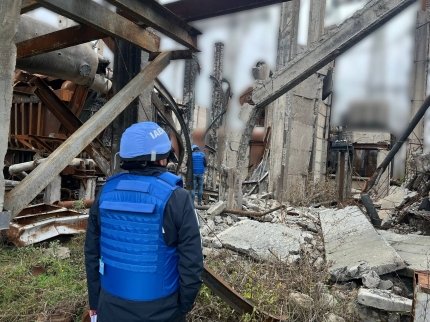As IAEA Director General Raphael Grossi noted, three operating Ukrainian nuclear power plants were forced to reduce electricity production as a result of a new massive missile-drone attack by the criminal army of the Russian Federation on energy facilities.
Points of attention
- Recent attacks by the Russian army on Ukrainian nuclear power plants have led to a reduction in electricity production, emphasizing the vulnerability of Ukraine's energy infrastructure.
- The IAEA monitoring mission is assessing the damage caused by the attacks, underlining the importance of maintaining nuclear safety in the country.
- Hourly blackouts continue in most regions of Ukraine, with predictions of the duration being reduced to two hours by the weekend.
- The Khmelnytsky, Rivne, and South Ukrainian NPPs reduced power levels as a precaution during the military operations, with capacity being reduced at 9 reactors.
- The consequences of the attacks on Ukrainian nuclear power plants highlight the urgent need for military restraint in areas with critical energy facilities and the significance of maintaining stable power supply for the nation.
What is happening in the Ukrainian energy system against the background of the latest massive missile attacks by the Russian occupiers
For the second time in less than two weeks, the Khmelnytsky, Rivne and South Ukrainian NPPs reduced their power levels as a precautionary measure during large-scale military operations in the country, Grossi emphasized.
It is noted that the capacity was reduced at 9 reactors of Ukrainian nuclear power plants.

At the same time, one of the reactors at the Rivne NPP was completely disconnected from the network.
The NPPs continued to receive electricity from the outside, despite the fact that the Khmelnytsky NPP lost connection with two power transmission lines.
Ukraine's energy infrastructure is extremely fragile and vulnerable, which puts nuclear safety at great risk. I once again call for maximum military restraint in the areas where the main nuclear power facilities and other facilities on which they depend are located. The IAEA will continue to assess the extent of damage to facilities and power lines that are important for nuclear safety, Grossi emphasized.
What is known about the consequences of the last massive missile and drone attack of the Russian army on Ukraine
Hourly blackouts continue to operate in most regions of Ukraine after a massive missile and drone attack by the Russian occupiers on the night and morning of November 28.
According to Oleksandr Kharchenko, director of the Center for Energy Research, closer to the weekend, power outages in Ukraine will be reduced to two shifts, currently they are being cut to 3-4 shifts at the same time.
Now the work is going on, it is going quite intensively. But I think that by the weekend the schedule will become softer than today or yesterday... I think that with the normal development of events, we should have two rounds in most of Ukraine, Kharchenko predicts.




